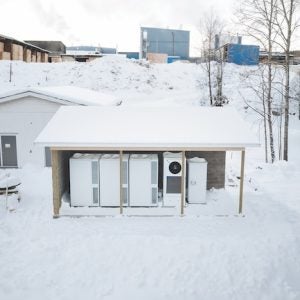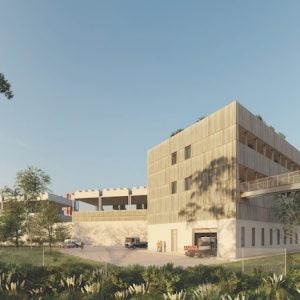
Supported by numerous governments and corporations, the global energy transition from fossil-fuel-based energy systems to low-carbon and renewable energy sources requires reimagining how electricity is produced and distributed. Beyond a major structural transformation of supply and demand, the transition promises energy equity, reliability, and resilience, if we can fully harness and orchestrate the ever-growing wave of distributed energy resources (DERs) and their supporting technologies, which are fuelling this change.
These technologies can be located on the grid either in front of or behind the meter. Utilities are responding to the challenge of optimising a continuously changing grid with various approaches. According to a new industry survey by Krishnan & Associates, Empowering the grid: unveiling the potential of DERMS in modern utilities, while the implementation of distributed energy resource management systems (DERMS) remains in the early stages in many regions, momentum is building, and utilities increasingly recognise the strategic importance of DERMS in enabling the transition to a more decentralised, flexible, and sustainable energy system.
The energy landscape is rapidly transitioning to renewable energy, in part driven by the growth of DERs. In 2023, global renewable electricity capacity additions reached an estimated 507 GW, almost 50% higher than in 2022. Solar PV and wind additions are expected to more than double by 2028 compared to 2022, continuously breaking records and reaching almost 710 GW.i
While this shift to cleaner sources of power benefits the environment, it brings new challenges to grid operators who must manage these variable resources as they ensure safe and reliable service. Further complicating matters, 80% of DER capacity growth is expected to occur at the customer premises.ii This creates safety and load balancing challenges for grid operators, as they cannot see these resources, known as behind-the-meter (BTM) assets, with their systems unless customers grant permission.
More broadly, the transition calls for a seismic shift from utilities being centralised, one-way, deterministic power generators and transmission providers to utilities and consumers being decentralised, bi-directional probabilistic generation and transmission co-operators. In both scenarios, utilities must ensure safe and reliable grid operations.
Affecting every area of the grid, DERs, their data, and supporting technologies require flexible and scalable integration approaches to ensure a successful transition. Through integration, grid operators seek to minimise power flow variability and unpredictability caused by factors like weather and consumer behaviour while increasing resiliency through grid control, operator insights, and self-healing technologies like automated fault location isolation and service restoration (FLISR). In effect, grid operators seek to not only gain visibility and control over all front-of-the-meter (FTM) and BTM DERs but also to optimise them under all conditions and circumstances.
While each utility’s path to DER integration is unique, several factors must be considered, including existing infrastructure, scalability, organisational priorities, regulatory requirements, and resource limitations. Typically, similar steps towards DER integration lead to the implementation of advanced distribution management systems (ADMS) and DERMS to realise the full potential of DERs. In fact, a recent SEPA (Smart Electric Power Alliance) survey indicated that 70% of respondents had implemented or were actively implementing ADMS, and 40% were committed to installing DERMS.iii
Survey says
How is the industry responding to these challenges? At this point in time, slowly and deliberately. Results from the Krishnan & Associates surveyiv indicate:
- 7% (of respondents) partial ADMS pilot is planned or operational, with limited future development;
- 12% ADMS is partially operational, with limited future development or expansion planned;
- 25% ADMS operational with provisions for future DERMS;
- 44% ADMS operational with DERMS under active development or pilots;
- 12% ADMS operational, DERMS integration underway, including DERs integration.
According to the report:
- ADMS adoption by utilities varies depending on strategic priorities, investment capacity, regulatory environment, technological maturity, and budget.
- While there are no consistent definitions for ADMS or adoption schedules, utilities usually implement custom configurations with differing capabilities.
- Some utilities integrate DERs with ADMS but on a small scale (<100 MW).
- DERMS must work in concert with ADMS.
While utilities’ journeys may be at different stages, they all lead to a composable and orchestrated solution in which ADMS and DERMS must work together to deliver optimal results — even if the question of whether or not to integrate DERMS with ADMS or keep it separate seems up for debate. Consensus has been reached on the idea that ADMS and DERMS must work together and, based on a myriad of changing requirements and uncertainties such as a lack of standards, utilities value flexible composable architectures. Where DERMS extends the core functionality of ADMS, a composable architecture allows utilities to strategically prioritise solution implementation as opposed to a single, large project at one time, if they prefer.
The path forward
While DERMS adoption remains in its early stages, evolving regulatory frameworks, business models, and increasing adoption rates of DER are expected to drive further investments in the deployment and expansion of DERMS. Utilities are increasingly recognising the strategic importance of DERMS in enabling the transition to a more decentralised, flexible, and sustainable energy system. Implementation varies widely depending on location, regulatory frameworks, technological advancements, and utility strategies.
Interestingly, the Krishnan & Associates survey notes the importance of industry collaboration in adopting DERMS: “Although there is a growing interest in DERMS, utilities face several challenges when implementing and integrating them into the existing grid infrastructure, including technical complexities, data interoperability issues, cybersecurity concerns, regulatory barriers, and financial constraints. To overcome these challenges, utilities must collaborate with technology vendors, regulators, and other stakeholders to develop robust DERMS solutions and deployment strategies.” v
To solve these challenges and answer the question as to whether we can fully harness and orchestrate DERs and their supporting technologies requires collaboration amongst all stakeholders and knowing where to begin. For utilities, the steps along the path forward were captured in a recent interview with Brad Williams from Oracle.vi Williams says he frequently gets asked this question. He advises utilities to:
- Start with processes to capture and manage the actual devices.
- Create digital twin models and integrate them into your systems to for operational flexibility and program management.
- Address scalability in stages. Pilot in settings like the Oracle Industry Lab; test proof of concept in the field, and then scale to a system-wide rollout. Go from 10 devices, to 100s, to 1000s, to millions.
- Focus on architecture because it is critically important to deliver this scalability and flexibility.
These steps are supported by the research findings in the Krishnan & Associates industry survey. To navigate the energy transition and take advantage of the growing presence of DERS, utilities must focus on core capabilities, flexibility, scalability, and collaborative vendor relationships.
For a deeper dive into the survey results, industry insights, and DERMS strategies you can implement wherever you may be in your DER journey, you can download the Krishnan & Associates report here: https://go.oracle.com/LP=144178?Campaignid=577246






